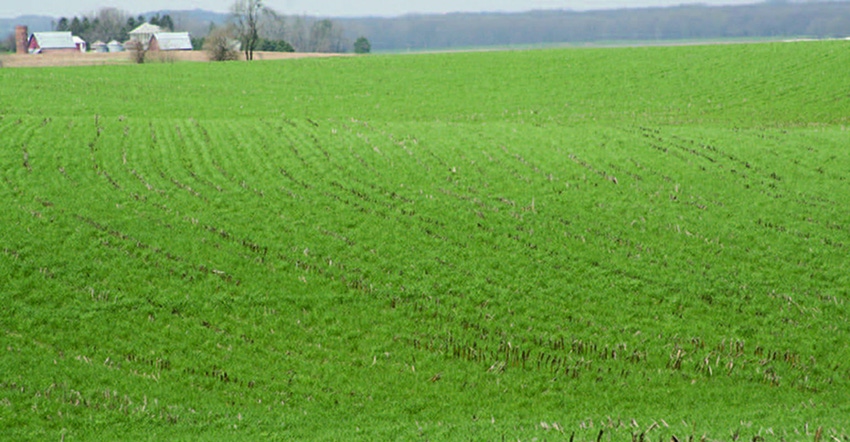September 10, 2020

Cover crops have been shown to have many benefits, including improving water and soil quality, reducing erosion and capturing nutrients. Choosing the right cover crop, however, can be difficult.
The Midwest Cover Crops Council —made up of representatives from 12 Midwest states and universities, including Purdue, the province of Ontario and other agricultural stakeholders — is rolling out an improved cover crop selection tool that will help farmers make those decisions. Users select their state/province and county and then select the goals they have for cover crops — erosion control, nitrogen scavenger, fighting weeds and providing forage, for example. They also can provide information about the cash crops they are planting and drainage data for their fields. The tool offers the best cover crop options for the specified conditions. Clicking on the cover crops brings up data sheets that offer more information about each crop, seeding rates and more.
“This gives good information about the species that will fit each user’s unique situation — their rotations, timeframes and goals,” said Anna Morrow, program manager for the MCCC and a staff member in Purdue’s Department of Agronomy. “We’ve been able to give users a visual way to take in and process that information.”
The updated tool includes more accurate seeding dates for each county based on 30-year National Oceanic and Atmospheric Administration frost date data; changes to seeding dates and rates to align with new research; and is now mobile-friendly and complies with the Americans with Disabilities Act.
“We met with farmers, researchers, government agencies, agribusiness leaders and stakeholders in all the states and provinces we represent to get the most up-to-date information available and update the tool in ways that would be most beneficial for our users,” Morrow said. “This tool is good for farmers who want to get started with or are currently using cover crops and need to get reliable, current information to help them make the best decisions for their operations.”
The tool has updated data for Iowa, Illinois, Minnesota, Wisconsin, Ohio, Michigan and Ontario. North Dakota and South Dakota, which were not part of the original tool, have been added. The remaining four states, Indiana, Missouri, Kansas and Nebraska, have been recently updated or added to the tool and will be updated again over the next two years.
The MCCC will hold a live, one-hour webinar at noon Eastern (11 a.m. Central) Sept. 23 to demonstrate the new tool and answer questions. To register for the webinar, view a recorded version later and access the tool, go to mccc.msu.edu/selector-tool/.
The updates were made possible by funding from North Central Region Sustainable Agriculture Research and Education Program and Grain Farmers of Ontario.
Source: Purdue University, which is solely responsible for the information provided and is wholly owned by the source. Informa Business Media and all its subsidiaries are not responsible for any of the content contained in this information asset.
You May Also Like




